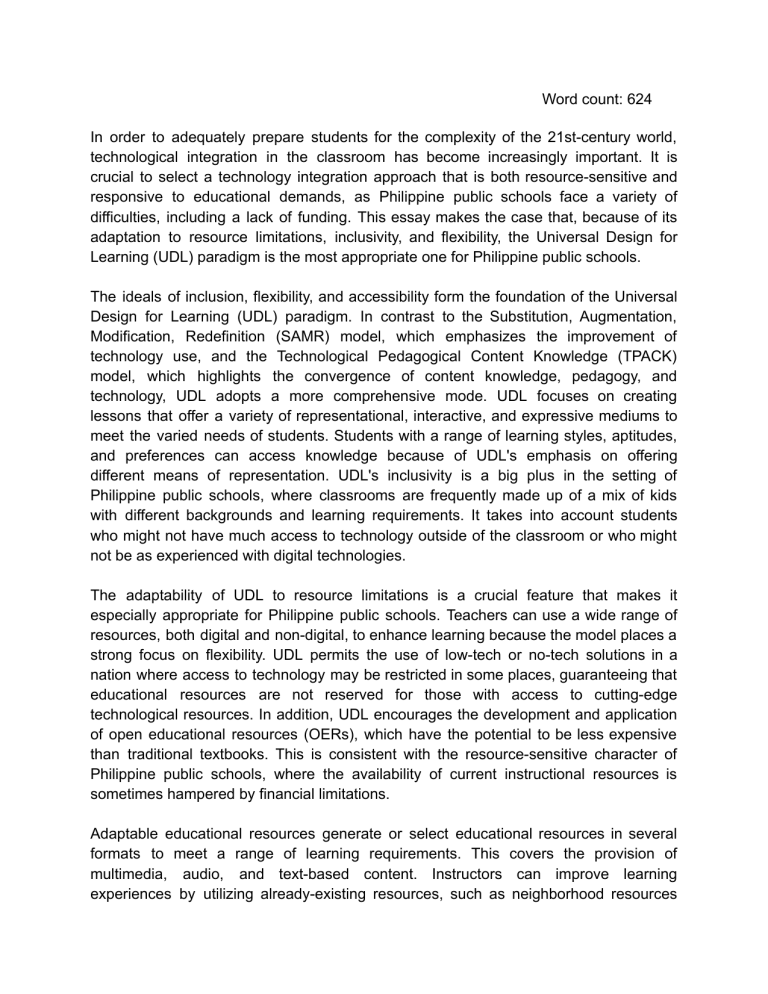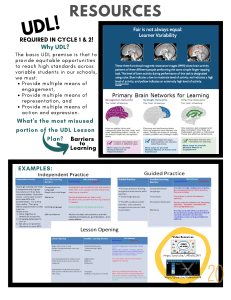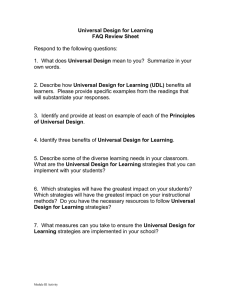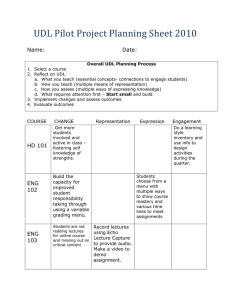
Word count: 624 In order to adequately prepare students for the complexity of the 21st-century world, technological integration in the classroom has become increasingly important. It is crucial to select a technology integration approach that is both resource-sensitive and responsive to educational demands, as Philippine public schools face a variety of difficulties, including a lack of funding. This essay makes the case that, because of its adaptation to resource limitations, inclusivity, and flexibility, the Universal Design for Learning (UDL) paradigm is the most appropriate one for Philippine public schools. The ideals of inclusion, flexibility, and accessibility form the foundation of the Universal Design for Learning (UDL) paradigm. In contrast to the Substitution, Augmentation, Modification, Redefinition (SAMR) model, which emphasizes the improvement of technology use, and the Technological Pedagogical Content Knowledge (TPACK) model, which highlights the convergence of content knowledge, pedagogy, and technology, UDL adopts a more comprehensive mode. UDL focuses on creating lessons that offer a variety of representational, interactive, and expressive mediums to meet the varied needs of students. Students with a range of learning styles, aptitudes, and preferences can access knowledge because of UDL's emphasis on offering different means of representation. UDL's inclusivity is a big plus in the setting of Philippine public schools, where classrooms are frequently made up of a mix of kids with different backgrounds and learning requirements. It takes into account students who might not have much access to technology outside of the classroom or who might not be as experienced with digital technologies. The adaptability of UDL to resource limitations is a crucial feature that makes it especially appropriate for Philippine public schools. Teachers can use a wide range of resources, both digital and non-digital, to enhance learning because the model places a strong focus on flexibility. UDL permits the use of low-tech or no-tech solutions in a nation where access to technology may be restricted in some places, guaranteeing that educational resources are not reserved for those with access to cutting-edge technological resources. In addition, UDL encourages the development and application of open educational resources (OERs), which have the potential to be less expensive than traditional textbooks. This is consistent with the resource-sensitive character of Philippine public schools, where the availability of current instructional resources is sometimes hampered by financial limitations. Adaptable educational resources generate or select educational resources in several formats to meet a range of learning requirements. This covers the provision of multimedia, audio, and text-based content. Instructors can improve learning experiences by utilizing already-existing resources, such as neighborhood resources and local knowledge. Diverse ways of expression are accommodated by the implementation of varied assessment strategies. This can entail offering students the chance to use projects, digital material, oral presentations, written assignments, or oral presentations to demonstrate their comprehension.Teachers are better able to identify each learner's abilities by offering a variety of evaluation options. In addition to utilizing local resources, collaboration and community engagement promote cooperation within the school community. To enhance the educational process, make use of local customs, cultural expertise, and community leaders. This practice not only amplifies the significance of education but also optimizes pre-existing community resources as instructional tools. In summary, the Universal Design for Learning (UDL) model is the most appropriate for Philippine public schools given the restricted resources, even though the SAMR and TPACK models have advantages in certain educational contexts. UDL is the perfect framework for meeting the various requirements of students and addressing the difficulties faced by public school teachers because of its adaptability, inclusivity, and resource awareness. Public school instructors may successfully traverse the challenges of technology integration by embracing UDL concepts. This will help to ensure that learning is resource-conscious and responsive to individual variations, which will improve learning outcomes for all students.



